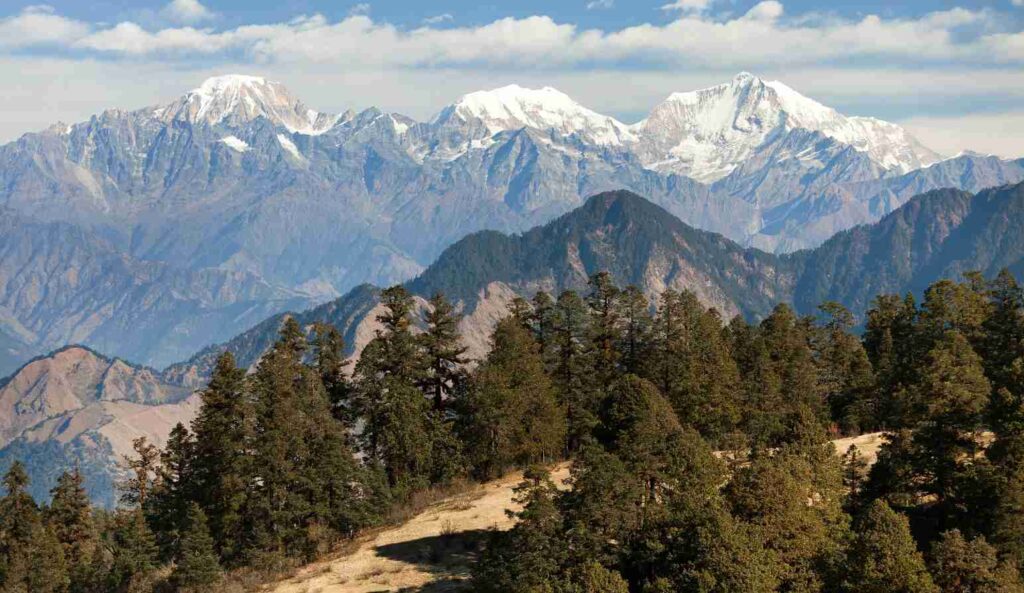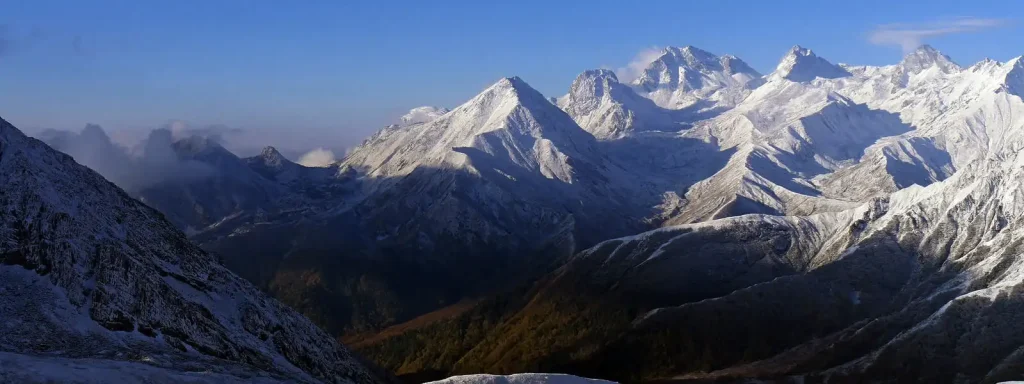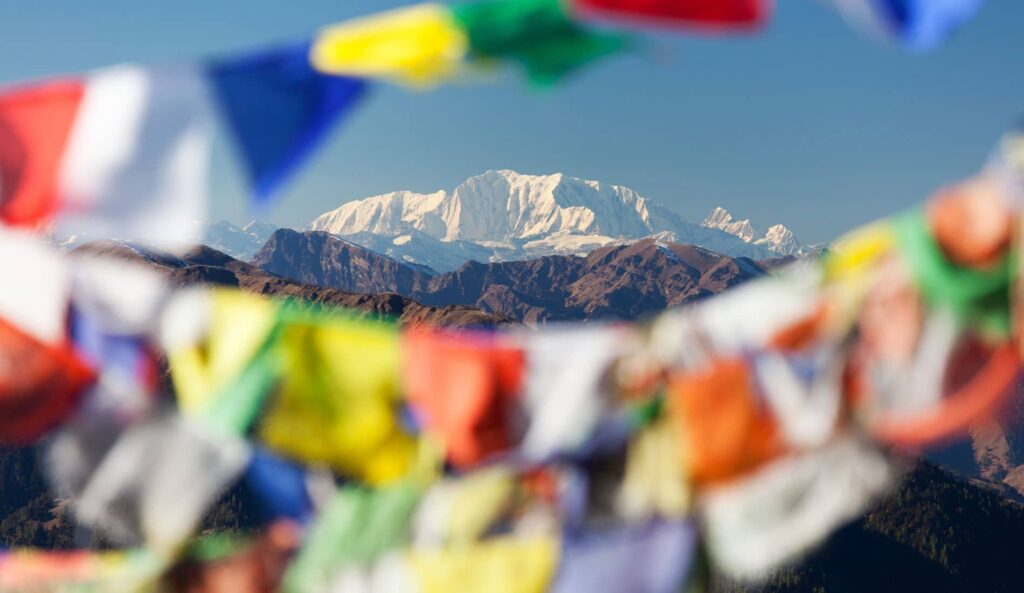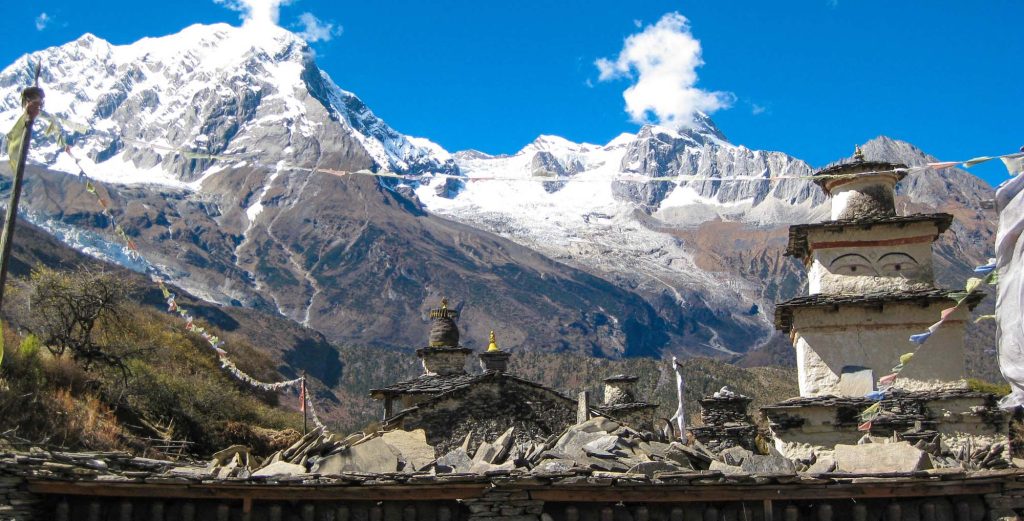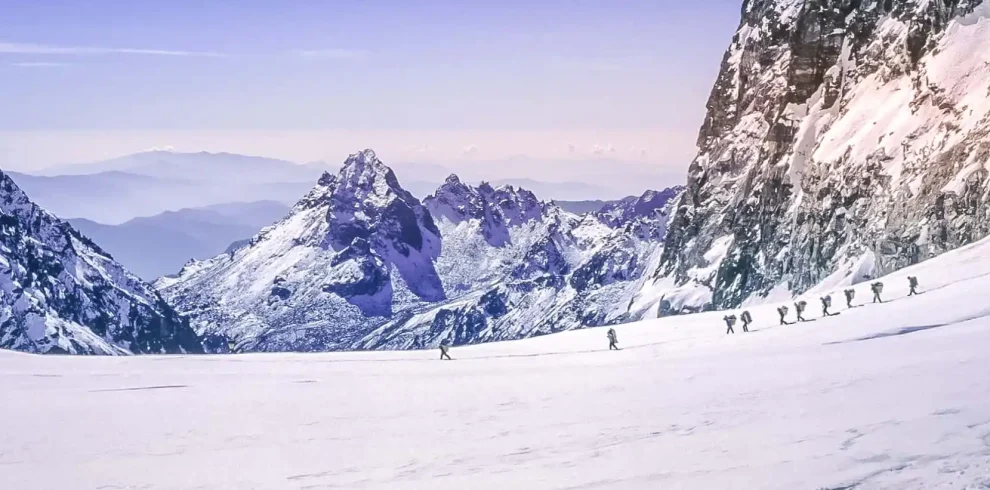-
Hotels & Guesthouse
-
Kathmandu
-
March to May & Sep to Dec
-
Tourist Bus & Private Vehicle
-
Moderate
-
4500 M
-
Eco-Tour, Hiking, Trekking
-
2-22
Mardi Himal Trek Overview

Mardi Himal Base Camp Trek is a short and spectacular trip within the Annapurna region. The Annapurna Mardi Himal Trek takes you through ancient rhododendron forests to what feels like the face of the mountains themselves, as you come up close with Mardi Himal, Machhapuchhre (Fishtail), Annapurna South, Hiunchuli, Ganga Purna, and Annapurna I.
From the Mardi Himal Base Camp Trek, you can witness remarkable sunrise and sunset views from different vantage points. The range of flora and fauna seen only in the Himalayas provides an intriguing glimpse into the biodiversity of the mountains. On this trek, you’ll traverse novel, less-explored paths to reach the Mardi Himal Base Camp (4100m), and you’ll explore tranquil routes that pass through ethnic villages and lush farmlands. The Mardi Himal Base Camp Trek is a hidden gem that many have yet to discover. Along the way, you’ll encounter waterfalls, suspension bridges, and many other elements that are sure to make the journey interesting.
We begin our 11-day excursion in Kathmandu with visits to UNESCO World Heritage sites before heading to the shortest and quietest trek in the Annapurna region: the Mardi Himal Base Camp Trek.
Aarohi Holiday believes that no experience is more fulfilling than traveling with your family, and trekking in the remote Himalayas is just the cherry on top.
Mardi Himal Trek Highlights
- Stunning, close-up views of the Annapurna range, especially Machhapuchhre (Fishtail), Annapurna South, and Hiunchuli. The views from the Upper Viewpoint and Mardi Himal Base Camp are particularly awe-inspiring.
- Mardi Himal offers a quieter, off-the-beaten-path experience. The trails are less traveled, providing a peaceful and intimate connection with nature.
- Enjoy tranquil routes through ethnic villages, luxurious farmlands, waterfalls, and suspension bridges.
- The lower sections of the Mardi trek are particularly known for their vibrant rhododendron forests, which bloom beautifully in the spring.
- The trek offers numerous opportunities to witness breathtaking sunrise and sunset views over the Himalayas. The changing colors of the mountains as the sun rises or sets create unforgettable moments.
- Reaching the Mardi Himal Base Camp, situated at around 4,500 meters, is a major highlight. The panoramic views from the base camp are spectacular, offering a close-up perspective of Machhapuchhre and the surrounding peaks.
- 11 days, including a visit to UNESCO World Heritage sites in Kathmandu.
Mardi Himal Trek Itinerary
Upon your arrival at Tribhuvan International Airport, we offer a pick-up facility from the airport and arrange your stay at the most comfortable hotel in the city. You will meet the team of trekkers, and together we will prepare for the trek. Overnight stay in Kathmandu.
Today will be an exhilarating day as you are introduced to some of the most revered Hindu and Buddhist religious sites listed as UNESCO World Heritage sites. You'll explore the mysticism surrounding the Pashupatinath temple, Boudhanath stupa, Patan Durbar Square, and Swayambhunath stupa. Overnight stay in Kathmandu.
Our journey begins with a tourist bus ride of about 6 to 7 hours through lush green forests, meandering roads through the hills, and alongside gracefully flowing rivers. In Pokhara, you can explore the lakes, such as Phewa, visit caves, and enjoy the vibrant streets. In the evening, you can take a leisurely walk by the lake. Overnight stay in Pokhara.
Today, we drive from Pokhara to Kande, which takes around 45 minutes to 1 hour. Upon reaching Kande, we start our trek to Australian Camp, which takes about 2 to 3 hours. The trail involves an uphill climb through a thick forest of oak, maple, hemlock, and rhododendron. From the Australian Camp, we get magnificent views of the Himalayan peaks, including the Annapurna range and Dhaulagiri. Overnight stay at Australian Camp.
We start with a slow climb from Australian Camp (2,060m), then descend slightly to Pothana (1,950m), followed by an uphill climb to Deurali (2,100m). From Deurali, we take a right turn onto a jungle trail that takes us to Forest Camp (2,600m). The trail goes up, undulates along the top of a ridge, and has some steep sections before reaching Forest Camp. Overnight stay at Forest Camp.
We continue our trek from Forest Camp, walking through dense forest areas. The natural beauty around us is truly captivating. We pass Low Camp, where we can enjoy stunning views of Mount Machhapuchhre (Fishtail). We continue our trek uphill, passing through rhododendron bushes and getting closer to Mardi Himal and Mount Machhapuchhre. We finally reach High Camp, where we can take in the splendid mountain views. Overnight stay at High Camp.
Today, we trek to Mardi Himal Base Camp, passing a few uphill and downhill trails. The trail is rough and rugged but offers the most exciting part of the trek—the closest views of several peaks, including Mount Annapurna, Mardi Himal, Mount Hiunchuli, and Mount Machhapuchhre. After spending time at the base camp, taking pictures, and enjoying the surrounding views, we return to High Camp. Overnight stay at High Camp.
We descend from High Camp to the village of Siding. The trail is pleasing and not too difficult, offering picturesque landscapes throughout the trek. Once we reach Siding, we rest and explore the village. Overnight stay at Siding.
After a short walk, the trail skirts an outcrop before leading to the road where transport awaits to take us back to Pokhara. We return to Pokhara by lunchtime. You have the rest of the day free to explore Pokhara's attractions, such as Mahendra Cave, David’s Fall, and the various lakes. Overnight stay in Pokhara.
We have an early breakfast and then board a tourist bus back to Kathmandu. The bus ride takes about 7 hours through hilly terrain, with a couple of breaks in between for snacks and lunch. In the evening, there will be a farewell dinner (Nepali Food) to celebrate the successful completion of our journey. Overnight stay in Kathmandu.
Your wonderful adventure in Nepal comes to an end today. We wish you all the best. A representative will take you to the airport approximately 3 hours before your scheduled flight. We hope you had a fantastic time with us and look forward to seeing you again for your next trip.
Our team guides, porters, and accompanying staff are locals with a broad knowledge about each and every location that we travel through.
Mardi Himal Trek Package Cost Includes & Excludes
Cost Includes
- Pick up and drop off from and to International airport.
- 3-night hotel in Kathmandu (first two nights and last one night).
- 2 nights hotel in Pokhara.
- TIMS (Trekkers Information Management System) Card.
- Annapurna Conservation Park permit.
- One porter for each two people.
- Accommodation in tea houses twin sharing (private room/ Shared bathroom).
- 3 Meals a day – breakfast, lunch, Dinner during the trek (Anything from the menu).
- All land transportation by bus / van / car.
- Sightseeing tour car A/C with driver.
- Farewell dinner at Nepalese cultural restaurant after the trek in Kathmandu.
- All taxes and Company service charges.
Cost Excludes
- Nepal Visa fee (bring accurate USD cash and two passport size photographs).
- International airfare to and from Kathmandu.
- Lunch and Dinner in Kathmandu.
- Monument sites entrance fees while sightseeing in Kathmandu.
- Excess baggage charges.
- Extra night accommodation in Kathmandu because of early arrival, late departure, and earlier return from the mountain (due to any reason) than the scheduled itinerary.
- Travel and rescue insurance.
- Personal expenses (phone calls, internet / Wi-Fi, laundry, bar bills - tea/coffee, hot chocolate, juice, beer, battery recharge, extra porters, bottled or boiled water, shower etc.).
- Tips for guides and porters (Tipping is expected, but not compulsory).
Packing List for Mardi Himal Trek
Warm Clothing: The weather can be chilly, especially at higher altitudes, so bring warm clothes, including a jacket, gloves, and hat.
Comfortable Footwear: Good trekking boots are essential for the mixed terrain you will encounter.
Daypack: A small backpack to carry essentials like water, snacks, camera, and a jacket.
Snacks: Bring some energy snacks such as nuts, granola bars, or chocolates to keep your energy levels up during the trek.
Water: Stay hydrated by carrying a water bottle and purifying tablets.
Camera: Don’t forget your camera to capture the stunning mountain views.
Mardi Himal Trek Map
FAQ on Mardi Himal Trek
Stunning Views: The Mardi Himal Trek offers panoramic views of the Annapurna Range, Machapuchare, and Mardi Himal, making it a perfect trek for nature lovers and photographers.
Moderate Difficulty: This 4-day trek is of moderate difficulty, making it suitable for both beginners and experienced trekkers. It’s a great introduction to trekking in Nepal, with a mix of scenic beauty and cultural experiences.
Local Culture: Explore traditional Nepali villages and experience the lifestyle of the mountain people, giving you a chance to immerse yourself in the rich culture of the Annapurna region.
Short Duration: The Mardi Himal Trek is perfect for those with limited time but who still want to experience the beauty of the Himalayas.
The total cost of the Mardi Himal Trek is 790 USD per person for a 5-7 day trek.
Yes, the Mardi Himal Trek is worth it. This trek offers stunning views of the Annapurna range, including the iconic Machhapuchhre (Fishtail) and Mardi Himal peaks. It is less crowded than more popular treks like Annapurna Base Camp or Everest Base Camp, providing a more serene and intimate experience.
Yes, you can trek Mardi Himal without a guide. The trail is well-marked and reasonably simple, suited for independent hikers with some experience. However, hiring a guide can improve your trip by offering local expertise, guaranteeing safety, and assisting with navigation.
Mardi Himal is famous for its stunning views of the Annapurna range, which includes the well-known Machhapuchhre (Fishtail), Hiunchuli, and Mardi Himal peaks. It is also well known for its varied topography, which includes alpine meadows and thick rhododendron woods, and for the breathtaking panoramic views that can be seen from Mardi Himal Base Camp.
The viewpoint of the Mardi Himal Trek, often called Mardi Himal Base Camp, is at 4,500 meters. It provides stunning panoramic views of the Annapurna range, including prominent peaks such as Machapuchare (Fishtail), Annapurna South, Hiunchuli, and others.
The best time to visit Mardi Himal is during the spring Season (mid-February to May) and autumn (September to mid-December). The weather is usually consistent throughout these times, and the bright sky allows for great views of the breathtaking alpine scenery.
To reach Mardi Himal, you’ll first travel to Pokhara from Kathmandu by flight or bus, then start the trek from Kande or Phedi.
It would be best if you had the Annapurna Conservation Area Permit (ACAP) and a TIMS card (Trekkers’ Information Management System).
Mardi High Camp is situated at an altitude of 3,580 meters (11745 feet).
The trail passes through several villages with teahouses providing food and accommodation, such as Pothana, Forest Camp, and Siding.
You can see stunning views of Annapurna South, Hiunchuli, Machapuchare (Fishtail), and Mardi Himal from Mardi Viewpoint.
Travel insurance is essential in Mardi Himal Trek, covering high-altitude trekking and emergency evacuation.
Accommodations include tea houses with basic facilities, offering meals like dal bhat, noodles, soups, and local dishes.
Yes, solo treks are possible, but it’s safer and more enjoyable with a guide or in a group.
While it’s possible, trekking during the monsoon season (June to August) is challenging due to heavy rainfall, slippery trails, and potential landslides. It’s best to avoid this period.
Essential Info
Physical Fitness
Many people have questions as to what level of physical fitness is required for visiting Nepal, and that is extremely reliant on what activity the visitor is engaging in. With that said, for a standard trek of moderate grading (Everest Base Camp Trek is an example of moderate) the daily activity will be 7-8 hours, and elevation will generally not exceed 5,500 meters. The day’s trekking is sustained and will involve both long steep climbs, and descents with a variety of terrain underfoot from well-trodden paths, to rocks covered with ice or snow. A typical day would include a number of climbs or descents of 500 meters or more, starting after breakfast, resting at lunch, then continuous trekking until arriving at the teahouse.
In preparation for the trek, it is important to begin a training requirement at least 4 months before departing for Nepal. Three to four hours of aerobic exercise like running, walking, swimming, cycling & some gym work per week is the minimum and most will find it beneficial to add some basic strength training to their physical fitness routine. One of the best ways to prepare is to take practice hikes with a daypack roughly the same weight as what you will be taking on the trek. Do this only after a baseline of fitness has been reached. Moving fast is not the end goal, rather endurance is the focus, and will provide a more enjoyable and safe adventure.
Trekking Seasons in Nepal
There are two main seasons in which Nepal sees the most amount of visitors. Fall (September through November) being the most popular, and spring (March to May) coming in close behind. The summer months of June, July and August are the monsoon season and as such the trails are mostly washed out, and roads can sometimes be impassible due to landslide activates. Not to mention the view is non-existent. Still, there are a few places that lie in rain shadow areas and see significantly less rain if any at all, and summer can be a good time to visit these places.
Winter in Nepal is dry, with very cold nights where temperatures can drop to -20°C at the highest altitudes, but the days are pleasant and sunny. Additionally, the trails are much less crowded during this time of year. In Kathmandu, maximum daytime temperatures reach around 20°C.
Fall is the most popular because it’s after the monsoons, and the air is dry, the days are sunny, and everything is green in the lower valleys from the excessive rains. Spring is a popular choice because some rain returns, but the weather is generally warm and dry, and flowers are in bloom in the lower elevations.
Trekking Day
A typical trekking day begins with a cup of tea at around 6 in the morning. It is advised to pack your trekking gears in a duffle bag and essential supplies in your day pack in these early hours. After having breakfast, we begin the trek and head along the trail at around 8 am. The morning walk is designed to be longer as we begin with refreshed bodies and enthusiasm. Following a good morning’s walk, we make stop for lunch at around 11.30 am. The lunch involves group meals enjoying the vicinity around the stop. You can explore the surrounding or use the time according to your own consent. After resting for about an hour or two, we resume our trek to reach teahouse or camp by 3-4 pm. The afternoon walk is relatively shorter and can involve games and side trips as organized by the trekking guides. You also can enjoy breaks during the trek to relax, read or stroll around the area. You can converse with the local people and observe their lifestyle. Dinner is served around 7 in the evening to round off the day.
Meals and Accommodations
During the length of the trek, the accommodation style is commonly referred to as teahouse. These are family-run basic lodges that fill the role of the restaurant, meeting place, and boarding house for tourists. Electricity can be found in the rooms, which means one light bulb, and one or two outlets for charging electronics. The common areas are also lit by electricity. Teahouses may use solar, hydroelectric, or have electrical lines running into the village, so the commonality and availability of electricity may vary.
Most teahouses have private rooms, though if the trek is in a more remote or high altitude place dormitories are the norm. Each room has 1 or 2 single beds with basic bedding, and the bathroom is shared. Expect a mix of western and squat style toilets in the bathrooms.
Breakfast and dinner are taken at the teahouse and these lodges have large family style dining rooms centered on a stove to provide heat. The menu will have Nepali style western foods such as pasta, pizza, pancakes, burgers, and fries. Also on the menu is the traditional Dal Bhat meal. This is a lentil soup with rice and vegetable or meat curry. Most menus will also offer a smattering of local cuisine.
Internal Flight Delays
Nepal is an incredible country of mountains and valleys, rivers and green rolling hills. With this incredible diversity of landscapes, road travel can be extremely time consuming and flights within Nepal to reach popular trekking destinations is a must. Along with this mountainous terrain also comes the possibility of in climate weather. Not to mention the incredibly high number of visitors during peak seasons makes internal flight delays a very real possibility. To manage this possibility, it may be helpful to have a few extras days on either end of your tour. If any cancellations or flight delays do occur (high chances of flight delays from around Kathmandu to Lukla, Everest region), we also provide services to arrange helicopter to help you to be on your schedule on the premises of Civil Aviation Rules in Nepal which state that helicopters can fly if the visibility is 1500m. The cost ranges from USD350 to USD650 according to the number of passengers. The payment can be made either to the helicopter company or to us directly and can be made either by cash or using a credit card. It will also be helpful to purchase and review your insurance as some of the alternative measures for travel may be covered. Flight insurance too may cover changing your international flight if necessary.
Travel Insurance
Many expeditions and tours require that travel insurance is purchased prior to arriving in Nepal, but other treks and tours may not. However, travel insurance is definitely an important consideration. There are a number of reasons to consider insurance. Firstly, it may be required, so check to see what is being asked for by the company. Second, Nepal is a landlocked country, and there are few direct flights. Travel in and out can encounter some disruptions and if purchasing insurance, make sure flight delays and cancellations are included. The next reason to choose insurance is that, though every safeguard is in place during your tour, there are always extenuating circumstances that may result in an accident. Read the fine print of insurance policies to ensure trekking or any other activity you are engaging in is covered, as some policies have stopped covering trekking in certain places. It is impossible to have a relaxing trip without the comfort of good insurance, so do the research and choose carefully.
Nepal Visa Entry Procedure
For entry into Nepal, there are visa requirements everyone (except Indian nationals) must complete before being allowed to pass through immigration. This is for air travel as well as overland transportation. Most visitors may obtain a visa to enter Nepal, however, there are exceptions.
Three options are available for entry
15-day single entry: US $30
30-day single entry: US $50
90-day multiple entries: US $125
Please have a passport valid for at least 6 months from the time of entry, and have cash ready, preferably in US dollars, though there are other currencies Nepal Immigration accepts. If you are entering via overland, you must have US cash and 3 passport photos. For arrival by air, the kiosks at the airport take your picture for you.
For the most up to date list of exceptions for visa on arrival or to obtain the most current visa information, visit the Nepal Department of Immigration website.
Acute Mountain Sickness (AMS)
Acute Mountain Sickness is usually seen in un-acclimatized people shortly after ascent to high altitudes. The condition occurs due to the thinning of air as the altitude increases. The condition, if not taken seriously and treated immediately, can be life-threatening and its symptoms can be seen generally above 3000 meters. Some of the symptoms of AMS are nausea, vomiting, tiredness, shortness of breath and cerebral pain. The treks are designed to properly acclimatize you to the change in high altitude climate and sufficient precautionary measures too are taken to take utmost caution. We also equip our staffs with cell phones and satellite phones in occurrence of any emergency cases. We are greatly driven to keep the safety and security of our clients as our foremost concern.
Drinking Water
Water is essential for life, and clean water is imperative while on holiday. When choosing to visit less developed countries it is a concern that all travelers should consider. A few options are available when trekking or traveling in Nepal that will mitigate any chances of drinking contaminated water which could cause disruption of an otherwise fun adventure. The first consideration to take into account is that tap water should not be ingested. That even means when brushing your teeth. Most will choose to buy bottled water and if doing so make sure the cap has not been opened previously. Plastic bottle refuse is a problem, and with that being said there are other options on the market to assist in making water drinkable. Your local outdoor store can help with choosing what option might be best to use in conjunction with a reusable bottle. Your guide can also steer you to water that has been filtered and purified so ask him or her what is available.
Arrival Instruction
Upon your arrival at Tribhuvan International Airport, our company representatives are stationed to welcome you to the country. We request you to carefully look for your name being held by our representatives following the events upon landing. The representatives are responsible to escort you to your hotel in Kathmandu. You will see men offering you to carry luggage and take you to your destination as you exit the airport. We request you pay no attention to these people and follow the designated representatives and follow their instructions. You will also need to keep an eye on your luggage and belongings to avoid any complications.
Traveler Reviews
These genuine and honest reviews are provided by travelers who have previously journeyed with Aarohi Holiday and its team. The testimonials and firsthand experiences showcased here are sourced from well-known travel platforms such as TripAdvisor, Google, Facebook, and TrustPilot, etc.




